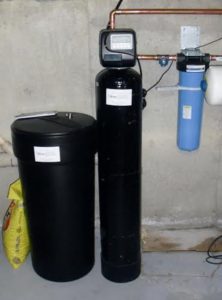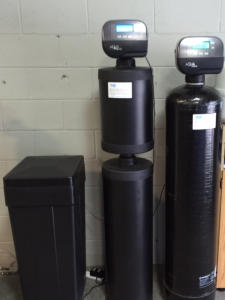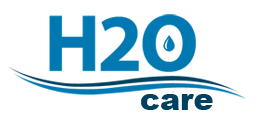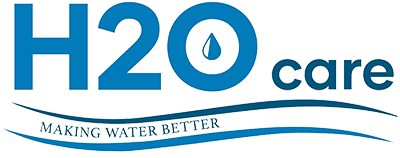
Water Softener with Brine Tank – Potassium chloride or Sodium Chloride
There are two types of salt typically used in Brine (or Salt) tanks that accompany water softeners. Sodium chloride and Potassium chloride. Both are effective in keeping the water softener resin clean inside the softener tank via the periodic back-washing or cleaning cycle. For those on low sodium diets, the Potassium chloride is an alternative to the Sodium chloride. It is somewhat more expensive, but works just as well. Although the amount of sodium entering the water is small (for example, a glass of milk would have more sodium in it than the typical glass of water after a water softener), some people prefer to eliminate all sodium from their drinking water. Other than using Potassium chloride, another way to accomplish this is to install a reverse osmosis drinking water system which will remove the salt from the water, as well as a host of other impurities and dissolved solids. For more on water softeners, see Water Softening.

Reverse Osmosis Purification System
Sodium chloride is a naturally occurring mineral found in the earth, coming from underground salt mines or solar evaporation ponds. It’s the most commonly used salt in water softener brine tanks. When the brine solution containing sodium chloride washes over the resin, the hard mineral ions in the water are replaced with sodium. Sodium chloride brands are commonly available in a variety of forms including blocks, crystals, pellets and cubes. Sodium chloride often is the customer’s preferred softener salt because of the comparatively lower price. Potassium chloride also is a naturally occurring mineral and is used mostly in agriculture. It works in softeners the same way sodium chloride does but replaces the hard water minerals with potassium instead of sodium. Potassium chloride is an essential nutrient for human health and plays an important role in the functioning of organs, nerves and muscles. It can be found in a wide variety of foods such as dairy products, meat, fruits and vegetables. Because extracting potassium chloride from the earth is more costly than mining sodium chloride, potassium chloride is more expensive.
How often should I add potassium chloride or sodium chloride?
How often you’ll have to add to the brine tank will depend on factors such as:
- The size of your brine tank
- How hard the water is in your area and/or how much iron & manganese
- How many people live in your house & how much water is used
For example, a larger family will most likely consume more water which will cause your softener to regenerate more frequently, and thus salt will need to be added more often.The valve control panel on most water softeners and conditioners will do all of the calculations for you regarding when to regenerate. You’ll just need add the salt as it gets used up.
How high should the level of either be in my brine tank?

Brine Tank with Softeners
We recommend keeping your brine tank at least one quarter full of water softener salt at all times, whether sodium chloride or potassium chloride, and no more than four to six inches below the top of the tank for optimum efficiency. Make sure that the salt level always remains a few inches above the water level. Also, before you add new salt pellets to the brine tank, be sure to loosen up any encrusted salt that may be sticking to the edges of the tank and make sure to break up any large pieces of salt. If the salt has formed one solid mass (known as bridging), manually break up the salt block by pouring hot water over it—making it easier to break up and remove. Higher quality salt, which is more pure and contains less dirt and other particles, will help avoid this annoying potential problem. 
